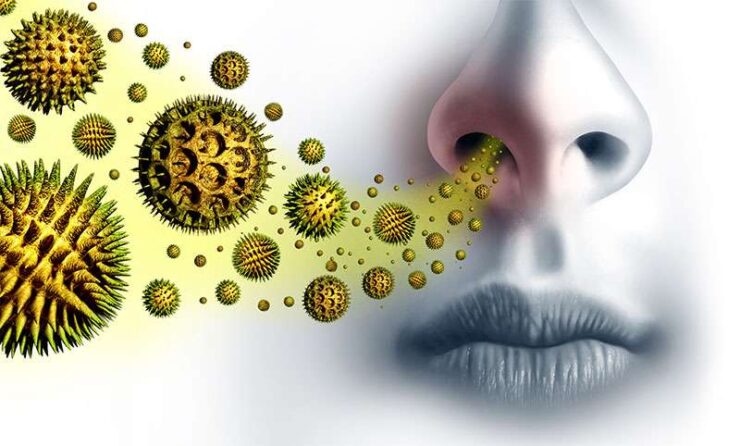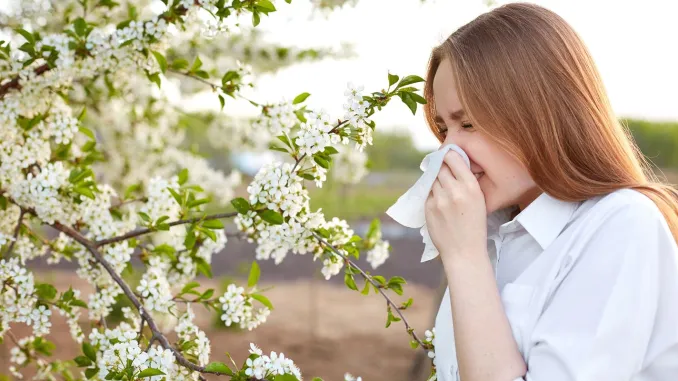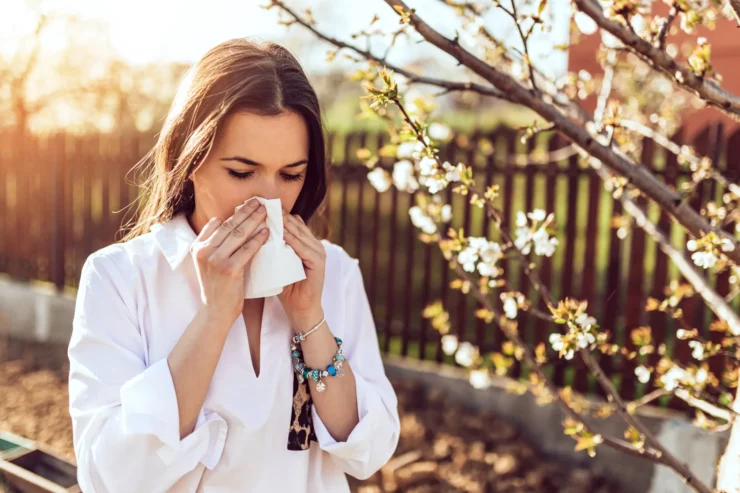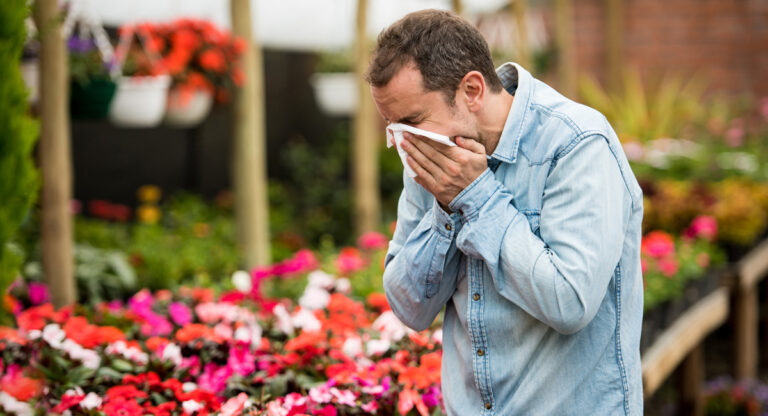Every single one of us knows at least one person that is allergic to certain plants or flowers. Probably the majority of you reading this article have also experienced some signs of allergy during the spring season when everything starts to blossom. Given the fact that flowers are so beautiful, many of us want to cultivate them in our homes or gardens. Allergies tend to make things complicated in this matter.
Although many types of flowers, especially those belonging to the aster family and those that are pollinated by the wind, can cause a large number of allergic symptoms, there are still plenty that does not cause sneezing or any other allergic reactions. So, you just need to inform yourself and see which ones won’t trigger the reaction in your case.
Some of the most fragrant garden plants, which you will immediately suspect are allergy-causing, are not at all. Flowers such as roses do not have pollen that is dispersed by the wind and will not affect you.
However, some very fragrant flowers do not trigger allergies but can cause irritation with their powerful scents. Indoors, they can cause headaches and nausea, and it’s best to enjoy them outside. These species include jasmine, for example.
Of course, there are more and more garden plants that are grown mainly for their beautiful leaves and which, once the flowers are removed, cannot hurt anyone.
If you suffer from allergies or have someone close to you who is prone to them there’s one additional complicating factor. It is connected to the custom of presenting someone with a flower bouquet on special occasions. And let’s face it, there are so many occasions we buy flowers for, starting from the wedding ceremony, to a simple birthday gifting. Our advice is to consult Country Greenery if you’re having doubts about gifting someone a bouquet that may trigger a reaction. That way you’ll end up with a beautiful, allergy-free, bouquet of flowers.
In order to understand why so many people suffer from this, we need to explain what the allergy is, first.
What is an allergy?

It’s a reaction that arises as an interaction of hereditary factors and environmental influences. In fact, it’s an overreaction of the defense system to various environmental factors, otherwise harmless substances that we inhale, touch with our skin, inject or eat. In repeated contact with these substances, the body simply feels disturbed and as a reaction responds with unnecessary and excessive production of antibodies. They most often occur in childhood, but they can occur at any age. Reactions can be anything from mild to severe, and you’d be surprised how many people have these, but don’t even notice, or don’t even think about it being an allergy reaction to something so harmless as a flower.
It’s important to have in mind that it’s not the flower that triggers the reaction, but it’s pollen.
What is pollen?

These are microscopic grains produced by plants in order to reproduce. For us, the pollen that is carried by the wind is important, because then it can be inhaled and cause a reaction in a sensitive population. These grains are light and carried by the wind at times even over distances of up to 100 kilometers. Most of it, let’s say about 90%, remains at the point of release. In larger settlements and cities, due to special microclimatic conditions, these grains are densest in the air layer up to 10 m from the ground. With favorable meteorological conditions, warm and dry weather (30-40% humidity), with high air pressure, large amounts are released.
What are the symptoms and signs of such an allergy?

As we’ve mentioned in the beginning, certain seasons tend to be a lot heavier than others, in this case, it’s springtime when nature awakens in all its glory. As for how they manifest, the most common form is seasonal allergic rhinitis. It causes problems in the upper respiratory tract that occurs seasonally, at a time when certain pollen particles are in the air. Characteristic symptoms are:
- a) conjunctivitis – itching, burning, and watery eyes
- b) rhinitis – itching of the tip of the nose, feeling of nasal obstruction and fullness, sneezing and copious watery discharge from the nose, and occasionally loss of sense of smell.
Since we’re talking about an invisible enemy, one should have a habit of constantly trying to reduce the risk of being exposed to too much of it. Here are some suggestions on what you can do:
1. Avoid risk factors that make you sensitive to it
The best thing you can do yourself and avoid a reaction is to stay away from the following risk factors:
- Avoid going out and walking in the early hours of the morning, because the pollen in the air is the highest between 5 am and 10 am.
- When it’s windy outside and the air is dry, stay indoors. It’s best to go out right after it rains because it washes the pollen out of the atmosphere.
- Check the concentration of pollen in the air on specialized websites, and do not go out if its concentration is high.
- Avoid areas with freshly cut grass, as the grass is known to be the main cause of reactions.
- If you are sensitive, hire someone else to mow the lawn and do the yard work.
- Wear sunglasses, as they reduce the amount that gets into your eyes.
- When you come home from work or after running your daily errands, leave your shoes outside in front of the door. Ask your guests to do the same.
- Take off the clothes you wore outside, and take a shower to wash them off your skin and hair.
- Do not dry your clothes outside so that pollen does not remain on them, but dry them in the dryer in your apartment.
- Do not open the windows in your house and on your car.
2. Make sure the air in your home is fresh
Each of us perceives our house as a refuge and protection from unwanted external influences, including pollen. But it is not possible to completely remove pollen, so you should take care of the air quality in your home. If you keep the rooms you stay in clean, you will ease the symptoms that cause allergies.
Doctors also suggest keeping your immunity boosted in order to avoid having reactions that are too heavy, therefore eat healthy during the winter.







